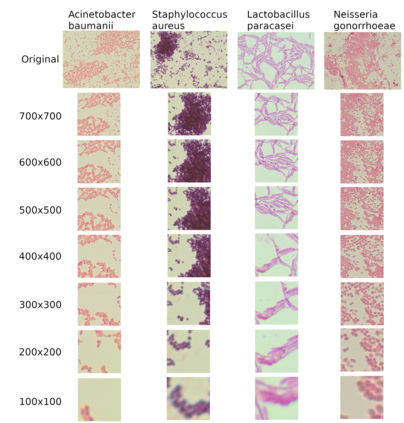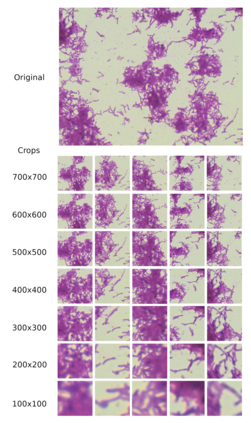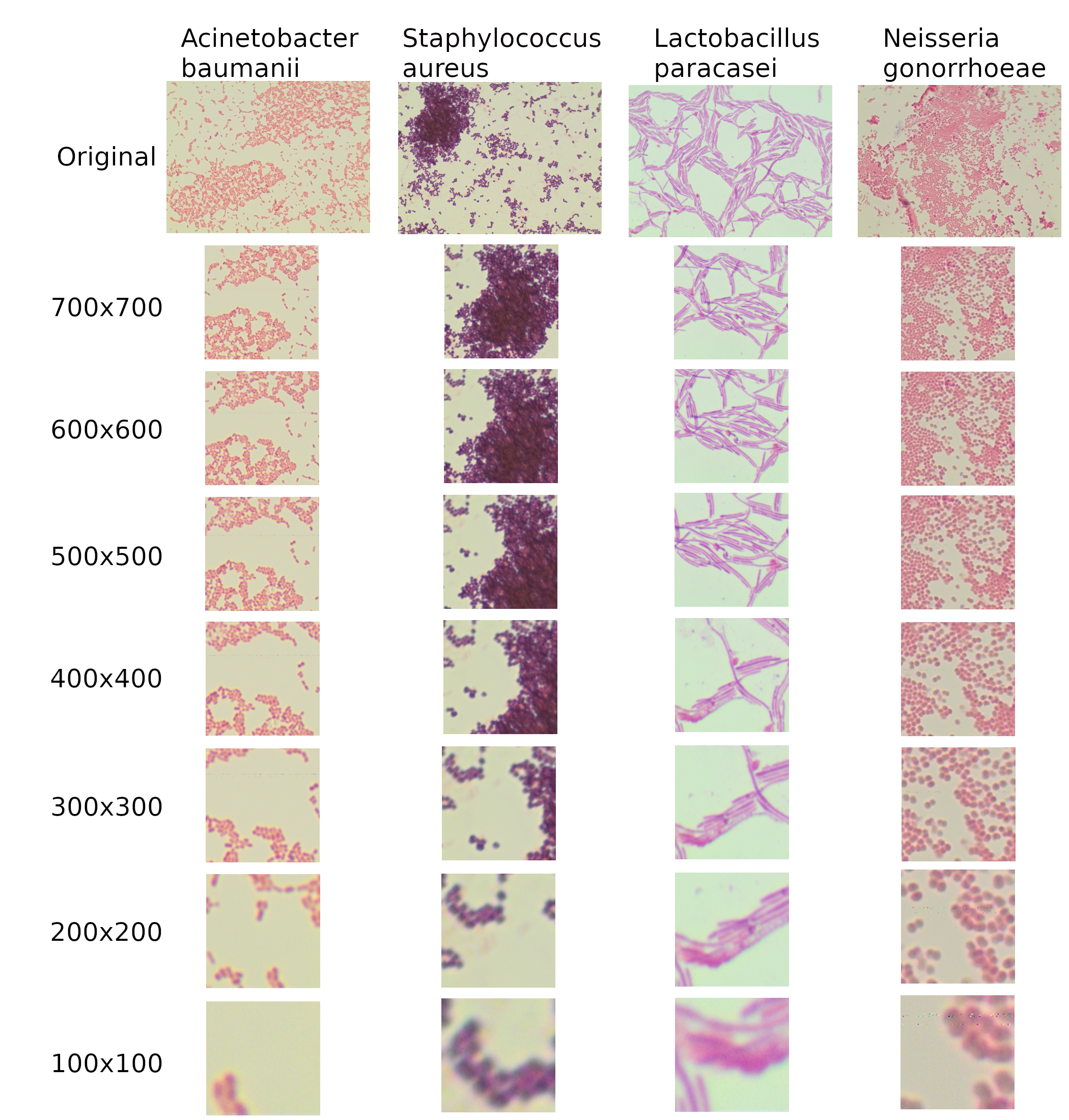This work presents twelve fine-tuned deep learning architectures to solve the bacterial classification problem over the Digital Image of Bacterial Species Dataset. The base architectures were mainly published as mobile or efficient solutions to the ImageNet challenge, and all experiments presented in this work consisted of making several modifications to the original designs, in order to make them able to solve the bacterial classification problem by using fine-tuning and transfer learning techniques. This work also proposes a novel data augmentation technique for this dataset, which is based on the idea of artificial zooming, strongly increasing the performance of every tested architecture, even doubling it in some cases. In order to get robust and complete evaluations, all experiments were performed with 10-fold cross-validation and evaluated with five different metrics: top-1 and top-5 accuracy, precision, recall, and F1 score. This paper presents a complete comparison of the twelve different architectures, cross-validated with the original and the augmented version of the dataset, the results are also compared with several literature methods. Overall, eight of the eleven architectures surpassed the 0.95 scores in top-1 accuracy with our data augmentation method, being 0.9738 the highest top-1 accuracy. The impact of the data augmentation technique is reported with relative improvement scores.
翻译:这项工作提出了12个经过精细调整的深层学习架构,以解决细菌物种数据集数字图像的细菌分类问题。基础架构主要是作为图像网络挑战的移动或高效解决方案出版的,这项工作中介绍的所有实验包括对原始设计进行若干修改,以便使其能够通过微调和传输学习技术解决细菌分类问题。这项工作还提出了该数据集的新颖的数据增强技术,该技术以人工缩放概念为基础,大大提高了每个测试过的架构的性能,在某些情况下甚至翻了一番。为了获得稳健和完整的评价,所有实验都是以10倍的交叉校准方式进行,并以五种不同尺度进行评估:上层1和上层5的精确度、精确度、回顾和F1分。本文对12个不同的架构进行了全面比较,与原始和扩充版的数据集交叉校验,结果也与若干文献方法进行了比较。总体而言,11个架构中的8个架构超过头1级0.95分的准确度,与我们的数据增强方法相比,最高一级1级为0.9738,最高一级和所报告的最高一级1分。







